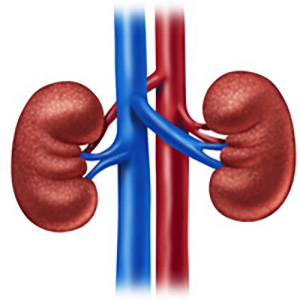Hands on wet lab and live surgery training in PCNL: Any impact to surgical skills of attending surgeons?

Accepted: June 23, 2022
All claims expressed in this article are solely those of the authors and do not necessarily represent those of their affiliated organizations, or those of the publisher, the editors and the reviewers. Any product that may be evaluated in this article or claim that may be made by its manufacturer is not guaranteed or endorsed by the publisher.
Objectives: The clinical value and efficiency of hands-on training courses in percutaneous nephrolithotomy (PCNL) remains undocumented. During the last 9 years, a two-day international intensive hands-on training course in fluoroscopic guided prone PCNL is taking place in our department on a monthly basis. Course includes wet lab training in the porcine model and live surgery training. In this work we report the outcomes of a survey send to course participants questioning the impact of the course to their clinical practice.
Materials and methods: A survey consisting of 26 questions was distributed online to a total of 91 trainees that had completed the course. Comparison of pre and post course surgical practices was performed using the "N-1" Chi-squared test.
Results: A total of 64 trainees responded to our online survey with 55.6% and 41.3% reporting a modest or major impact to their practice accordingly. Notable changes in puncture and dilation technique were evidenced while a uniform reduction in puncture and operative times was documented. 79.4% responded that the course increased the safety of their procedure, 73% that it reduced operating times, 39.7% that increased their stone free rates, 23.8% that reduced their complications and 23.8% that induced to change their instrumentation with respect of that they were using in the past. Subgroup analysis including only well experienced surgeons revealed a similar impact to their practice.
Conclusions: In the proper setting, an intensive hands-on PCNL course can have a significant impact on attending physicians. Participation to such events even for experienced surgeons should be encouraged.
Kyriazis I, Panagopoulos V, Kallidonis P, et al. Complications in percutaneous nephrolithotomy. World J Urol. 2015; 33:1069-77. DOI: https://doi.org/10.1007/s00345-014-1400-8
Kyriazis I, Kallidonis P, Vasilas M, et al. Challenging the wisdom of puncture at the calyceal fornix in percutaneous nephrolithotripsy: feasibility and safety study with 137 patients operated via a non-calyceal percutaneous track. World J Urol. 2017; 35:795-801. DOI: https://doi.org/10.1007/s00345-016-1919-y
Kallidonis P, Kyriazis I, Kotsiris D, et al. Papillary vs nonpapil-lary puncture in percutaneous nephrolithotomy: a prospective ran-domized trial. J Endourol. 2017; 31(S1):S4-S9. DOI: https://doi.org/10.1089/end.2016.0571
Campbell I. Chi-squared and Fisher-Irwin tests of two-by-two tables with small sample recommendations. Stat Med. 2007; 26:3661-75. DOI: https://doi.org/10.1002/sim.2832
Richardson JT. The analysis of 2 × 2 contingency tables--yet again. Stat Med. 2011; 30:890. DOI: https://doi.org/10.1002/sim.4116
Ziawee SAM, Sichani MM, Kashi AH, Samzadeh M. Evaluation of the learning curve for percutaneous nephrolithotomy. Urol J. 2010; 7:226-231.
Tanriverdi O, Boylu U, Kendirci M, et al. The learning curve in the training of percutaneous nephrolithotomy. Eur Urol. 2007; 52:206-212. DOI: https://doi.org/10.1016/j.eururo.2007.01.001
Allen D, O’Brien T, Tiptaft R. Glass J. Defining the learning curve for percutaneous nephrolithotomy. J Endourol. 2005; 19:279-282. DOI: https://doi.org/10.1089/end.2005.19.279
de la Rosette JJ, Laguna MP, Rassweiler JJ, Conort P. Training in percutaneous nephrolithotomy--a critical review. Eur Urol. 2008; 54:994-1001. DOI: https://doi.org/10.1016/j.eururo.2008.03.052
Schilling D, Gakis G, Walcher U, et al. The learning curve in minimally invasive percutaneous nephrolitholapaxy: a 1-year retro-spective evaluation of a novice and an expert. World J Urol. 2011; 29:749-753. DOI: https://doi.org/10.1007/s00345-010-0553-3
Stern J, Zeltser IS, Pearle MS. Percutaneous renal access simula-tors. J Endourol. 2007; 21:270-3. DOI: https://doi.org/10.1089/end.2007.9981
Kallidonis P, Kyriazis I, Vasilas M, et al. Modular training for percutaneous nephrolithotripsy: The safe way to go. Arab J Urol. 2015; 13:270-6. DOI: https://doi.org/10.1016/j.aju.2015.07.005
Aslam AU, Philipraj J, Jaffrey S, Buchholz N. A global snapshot of endourology residency training. Arch Ital Urol Androl. 2020; 92:219-229. DOI: https://doi.org/10.4081/aiua.2020.3.219
PAGEPress has chosen to apply the Creative Commons Attribution NonCommercial 4.0 International License (CC BY-NC 4.0) to all manuscripts to be published.


 https://doi.org/10.4081/aiua.2022.3.300
https://doi.org/10.4081/aiua.2022.3.300



